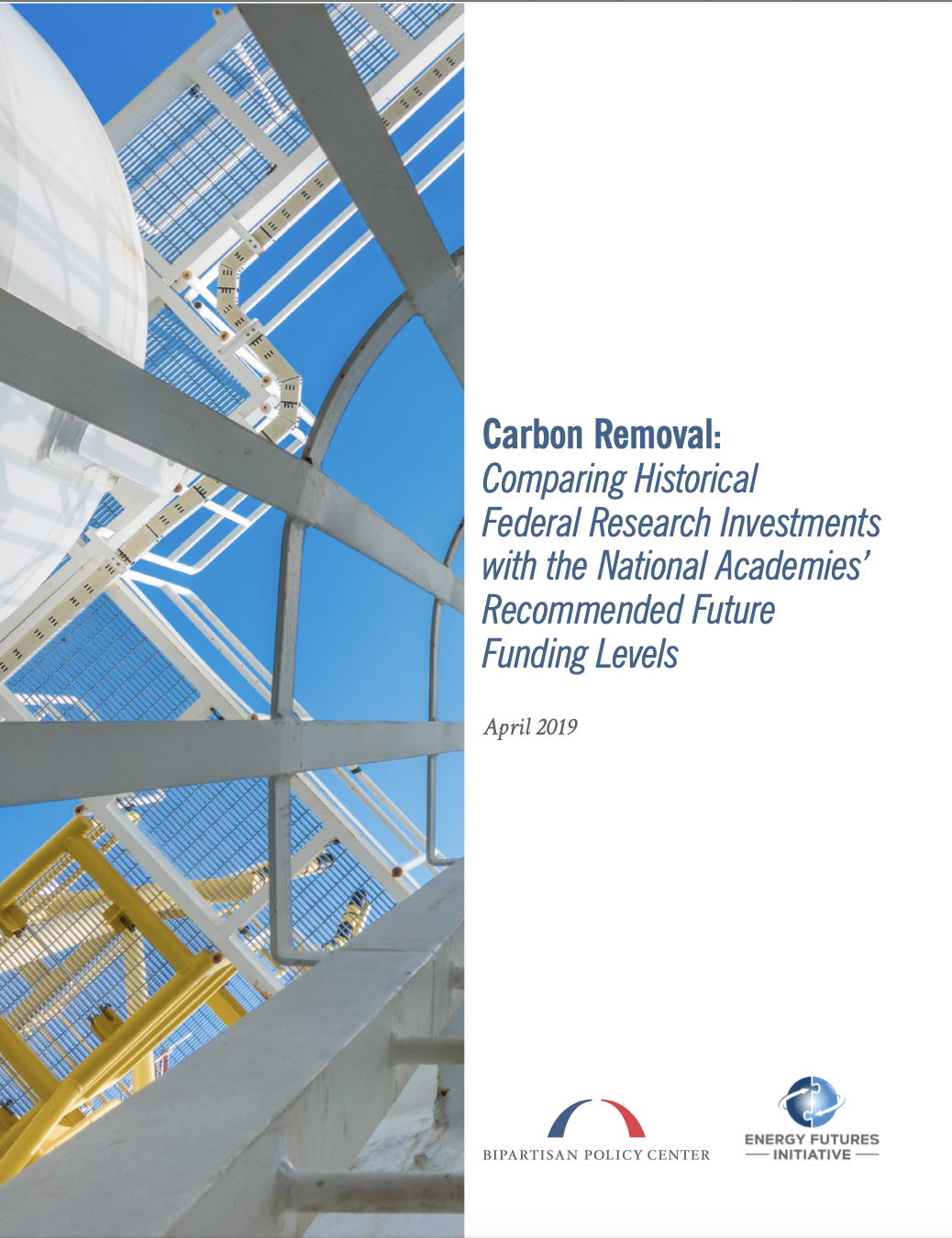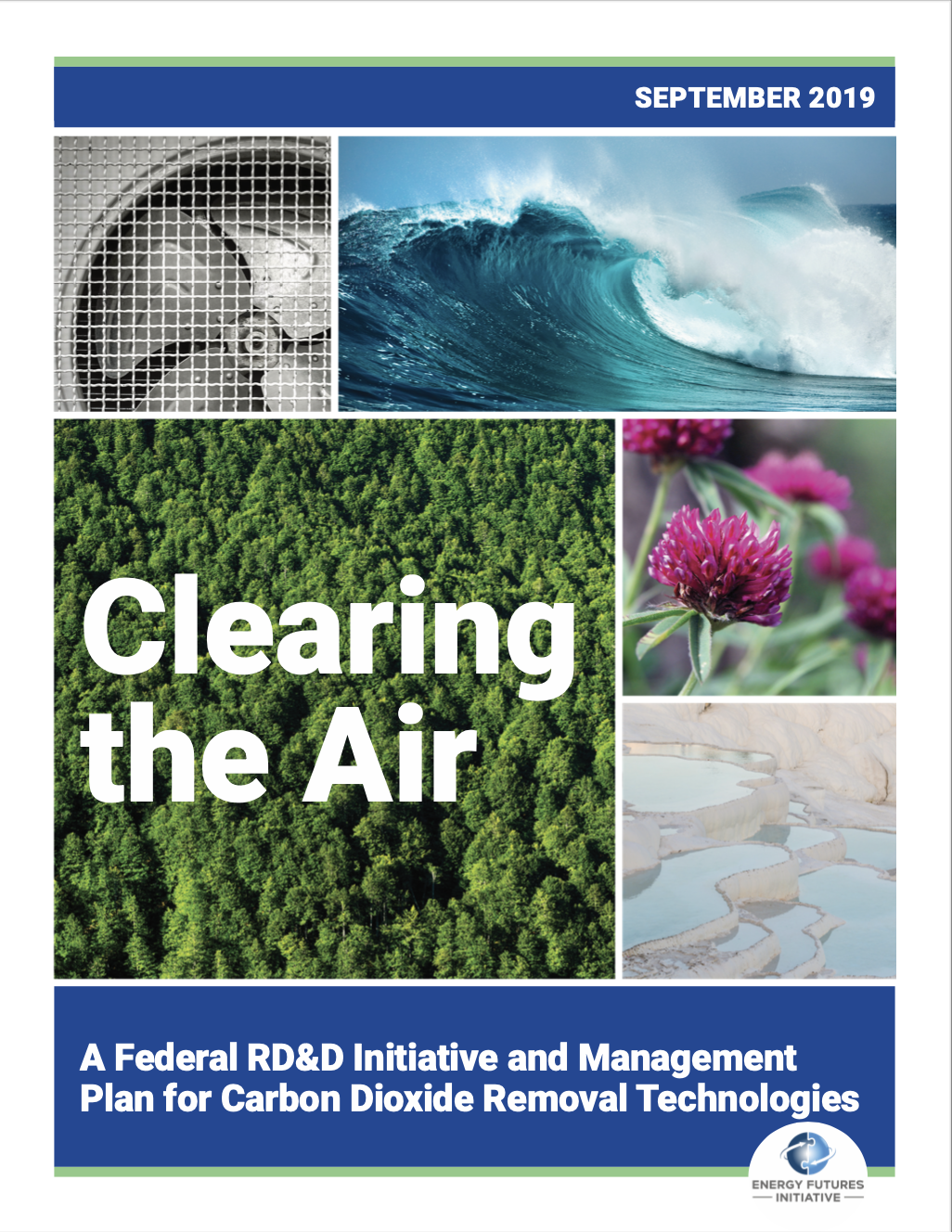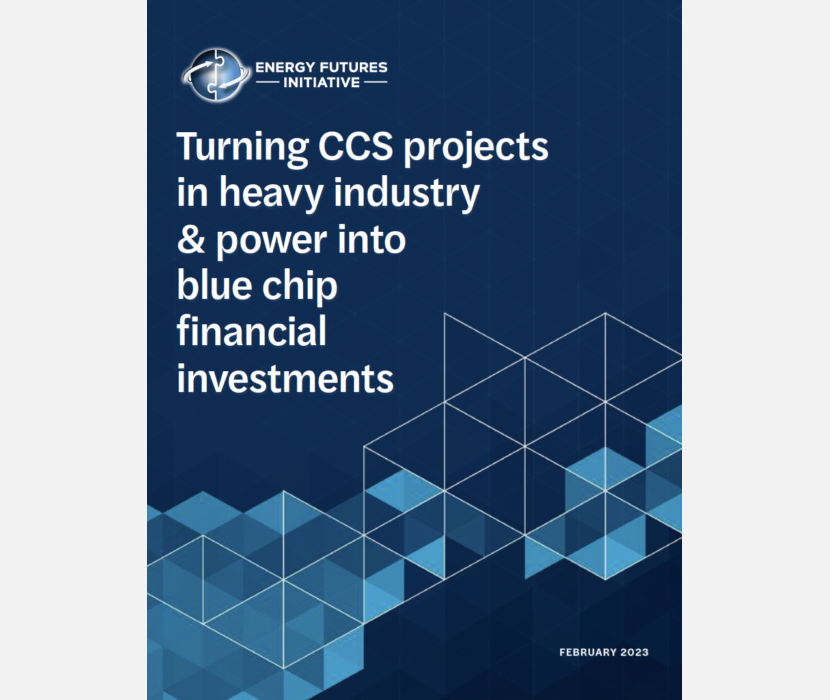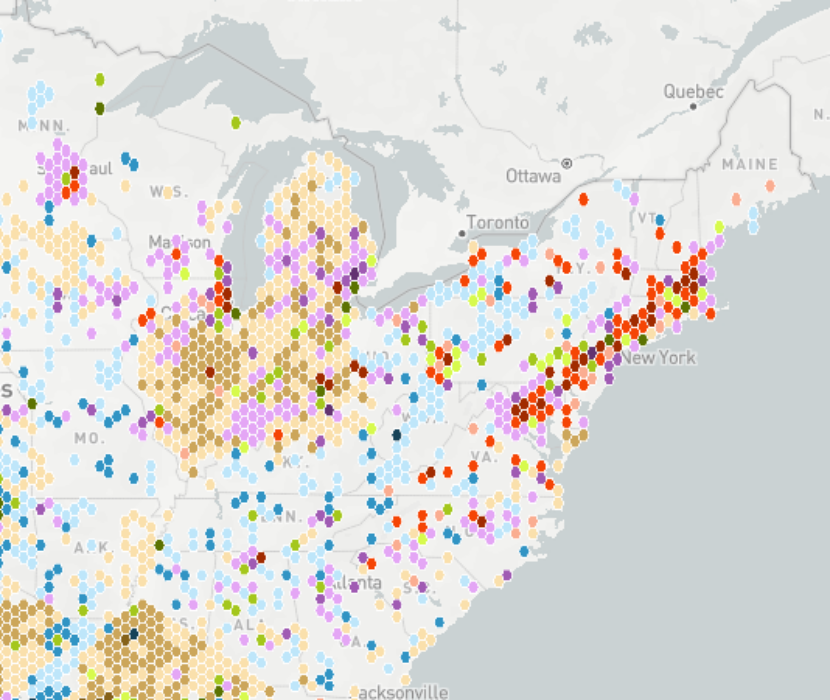Carbon Removal: Comparing Historical Federal Research Investments with the National Academies’ Recommended Future Funding Levels (April 2019) is a report produced jointly by the Energy Futures Initiative (EFI) and the Bipartisan Policy Center (BPC) that compares historical federal funding for carbon dioxide removal with the funding levels recommended by the National Academies of Sciences, Engineering, and Medicine (NASEM). All pathways limiting global warming to 1.5 degrees Celsius require carbon removal, according to the Intergovernmental Panel on Climate Change.
“Government has played a key role in driving advances in many of the technologies we enjoy today through strong and sustained research investments,” said Jason Grumet, president of the Bipartisan Policy Center. “It is crucial that we continue to invest in research at the level needed to capture the economic and competitiveness benefits associated with pioneering the next generation of better and cleaner advanced technologies including carbon removal.”
EFI and BPC conducted two forms of analysis (top-down and bottom-up) to inform how prior federal funding levels for carbon removal compared to NASEM recommendations. Top-down analysis was performed to identify accounts of federal agency appropriations that could be used to support carbon removal research, development, and demonstration (RD&D) initiatives. This analysis identified more than 23 appropriations accounts within 9 federal departments and agencies, implying the opportunity to add and redirect federal funding to support carbon removal RD&D with little legislative friction outside of appropriations bills.
Bottom-up analysis allowed researchers to find previous federal spending that may have directly or indirectly supported carbon removal objectives. A total of $3.7 million over 1,409 carbon removal-related RD&D projects were identified, showcasing the large deficit between historical federal investment in carbon removal and NASEM’s recommendation of $8.1 to $10.5 billion over the next couple of decades. The analysis revealed that while federal funding supported some terrestrial and biological carbon capture as well as carbon storage, very little funding was allocated to technologically enhanced forms of carbon removal, like direct air capture and carbon mineralization.
This report serves as a significant historical account of federal appropriations compared to necessary levels of funding. Carbon removal has received an increase in funding in years after the report was published, as noted in the fiscal year 2021 appropriations bill and the 2021 Infrastructure Investment and Jobs Act.
Related Content
(Share this post with others.)










